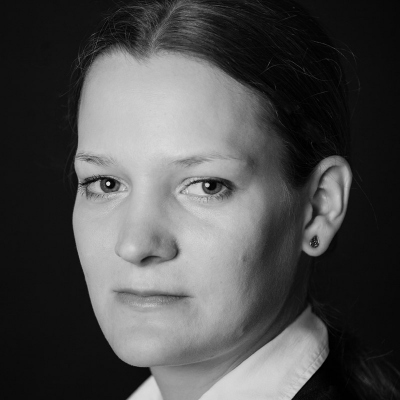Specifying the type of trademark in a registration filing has far-reaching consequences
It has now been more than 18 years since Enercon GmbH, a manufacturer of wind turbines, applied to register a colour trademark with the EUIPO consisting of a pillar with stripes in varying shades of green and white. The ECJ issued a definitive judgment on the extent of the protection granted.
The case was discussed on this site at the time of the court proceedings in an article that can be found here (in Polish). To reiterate briefly, Enercon GmbH registered a trademark consisting of different shades of green gradually becoming lighter from the bottom to the top.
![]() ZTUE-002346542
ZTUE-002346542
The company stated in the filing that it was registering the mark as a colour mark, but later in the proceedings it argued that in fact in the filing it was presented as a figurative mark. The authorities found, in proceedings that went through several phases, that the mark should be reviewed as stated in the filing, i.e. as a colour mark, and as such lacked distinctive character. This led to the registration being cancelled. When assessing the distinctive character of a colour mark, the authorities do not consider the shape in which the colour mark is presented. As a rule, the shape is not part of the mark and does not set the contours of the mark. It only shows how the colours are applied to the goods at issue. The court of first instance concurred. Enercon contested the court judgment, and the CJEU reviewed the appeal on 25 October 2018, issuing a judgment in case C-433/17 P.
The importance of one box on a form
In the appeal, Enercon presented the following argument:
- The court had made an error in finding that describing the mark in question in the filing as a colour mark defined the legal nature of the mark and affected assessment of whether the mark acquired distinctive character,
- Instead of assessing the registration of the mark as a whole, considering in particular the manner in which it was presented, the court only looked at the classification stated in the filing.
The company argued that it followed clearly from the registration certificate for the mark that it was a figurative mark in the shape described on the certificate. Moreover, the description of the type of mark only served to assist with administrative issues, because the phrase colour mark is not a legal term.
Final adjudication
The CJEU rejected the company’s appeal, confirming the court’s finding, that the description of the type of mark was not merely a means of assisting in the administrative procedure, and that in fact this was a legal requirement. In addition, it found that under the law the applicant was not entitled to subsequently modify the type of the mark. If authorities and the court were given the power to review a mark irrespective of the type declared in the application, this would constitute circumvention of the law. For this reason, the court had an obligation to examine the mark according to the type stated by the applicant.
With respect to the second objection, the CJEU found that the company had not argued in proceedings before the EUIPO that the mark should be considered to contain figurative elements on the basis of the code given on the registration certificate; it had not done this until proceedings were conducted in court. Under established case law, however, the court does not examine, for a second time, the facts in light of evidence that has only just been submitted to the court.
In conclusion, the CJEU found that neither the EUIPO nor the court had the power to state arbitrarily that the type of mark specified in the application should be disregarded or modified.
Present practice of the Polish Patent Office
As there is now no graphical representation requirement for trademarks, and the list of types of mark has been extended, the subject matter of an application, and the nature of the protection sought, should be considered carefully. Meanwhile, the present practice of the Polish Patent Office (PPO) differs from EUIPO practice. The PPO has published new PPO guidelines following a change in the definition of a mark under Polish law, which took effect on 16 March 2019. Under the new rules, if an application does not state the type of mark, the PPO assesses the type of mark on the basis of the mark description. If the applicant has incorrectly identified the type of mark, the PPO assesses the type of mark itself and informs the applicant. The PPO sets a deadline at the same time for the applicant to submit its standpoint. It therefore follows that an application for a mark that it is difficult to classify involves less risk in the case of marks registered in Poland.
Dr Monika A. Górska, attorney-at-law, Monika Dynowska, Intellectual Property practice, Wardyński & Partners

